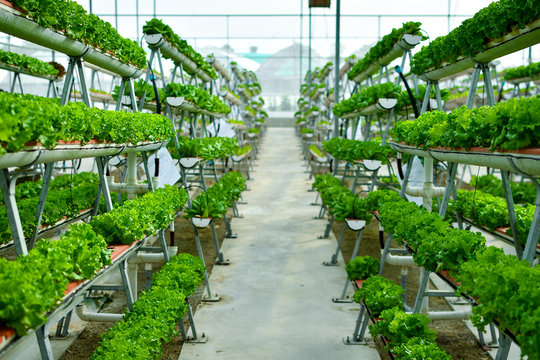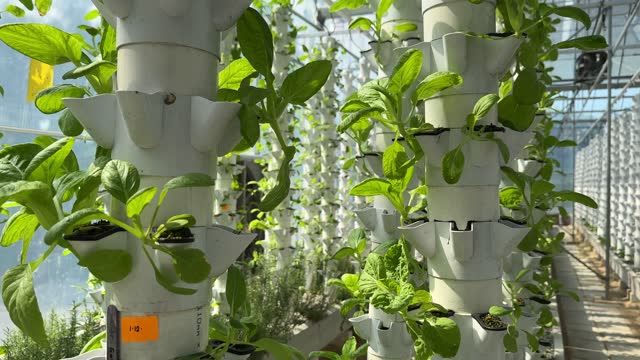Introduction
As urbanization increases and living spaces become more compact, traditional gardening methods may not be feasible for everyone. Vertical farming offers an innovative solution, allowing you to grow fresh produce in limited space. Whether you live in an apartment or a house with a small backyard, vertical farming can help you cultivate your own greens efficiently. This guide will walk you through the steps to start vertical farming at home, from selecting the right system to choosing the best plants.

Benefits of Vertical Farming at Home
- Space Efficiency: Utilize vertical space in your home to grow more plants in a smaller footprint.
- Fresh Produce: Enjoy fresh, home-grown vegetables and herbs year-round.
- Sustainability: Reduce your carbon footprint by growing your own food and cutting down on transportation.
- Health Benefits: Know exactly what goes into your food, avoiding pesticides and other chemicals.
Step-by-Step Guide to Starting Vertical Farming at Home
Step 1: Choose the Right Vertical Farming System
There are several types of vertical farming systems suitable for home use:
- Hydroponic Systems: Plants are grown in nutrient-rich water solutions without soil. Popular types include nutrient film technique (NFT) and deep water culture (DWC).
- Aeroponic Systems: Plants are suspended in the air, and their roots are misted with a nutrient solution.
- Soil-Based Systems: Traditional soil-based vertical gardens use stackable planters or wall-mounted containers.
Tip: For beginners, hydroponic systems are often recommended due to their efficiency and ease of use.
Step 2: Select a Suitable Location
- Lighting: Ensure your plants receive adequate light. Natural sunlight is ideal, but if it’s not sufficient, consider using grow lights. LED grow lights are energy-efficient and effective for indoor farming.
- Space: Choose a location with enough space to accommodate your vertical farming setup. Balconies, patios, or a sunny spot near a window are ideal.
- Accessibility: Ensure the location is easily accessible for daily maintenance, such as watering and harvesting.
Step 3: Gather Necessary Supplies
Depending on the type of vertical farming system you choose, you will need different supplies:
-
Hydroponic System:
- Hydroponic unit (purchased or DIY)
- Nutrient solution
- pH meter and pH adjustment kit
- Growing medium (e.g., rockwool, clay pellets)
- Water pump and air pump (if required)
-
Aeroponic System:
- Aeroponic unit (purchased or DIY)
- Nutrient solution
- Water pump and misting system
- pH meter and pH adjustment kit
-
Soil-Based System:
- Stackable planters or wall-mounted containers
- Quality potting soil
- Fertilizers
Common Supplies:
- Seeds or seedlings
- Grow lights (if needed)
- Timer (for automated lighting and watering)
Step 4: Set Up Your Vertical Farm
- Assemble the System: Follow the manufacturer’s instructions if you purchased a pre-made system. For DIY systems, ensure all components are securely connected and stable.
- Install Grow Lights: If using grow lights, position them to cover the entire growing area. Set the timer to mimic natural daylight hours (12-16 hours of light per day).
- Prepare the Growing Medium: For hydroponic and aeroponic systems, ensure the growing medium is properly set up. For soil-based systems, fill containers with potting soil.
Step 5: Plant Your Crops
- Choose Suitable Plants: Select plants that are well-suited for vertical farming. Leafy greens (lettuce, spinach), herbs (basil, mint), and small fruits (strawberries, cherry tomatoes) are ideal choices.
- Plant Seeds or Seedlings: Follow the instructions on the seed packets for planting depth and spacing. For hydroponic and aeroponic systems, place seeds or seedlings in the growing medium and ensure proper root contact with the nutrient solution.
Step 6: Maintain Your Vertical Farm
- Watering and Nutrients: Regularly check and replenish the nutrient solution in hydroponic and aeroponic systems. For soil-based systems, water the plants as needed, ensuring the soil remains moist but not waterlogged.
- Lighting: Adjust the height of grow lights as plants grow to ensure they receive consistent light.
- Pruning and Harvesting: Regularly prune your plants to promote healthy growth and increase yield. Harvest crops when they reach maturity.
Step 7: Monitor and Troubleshoot
- pH Levels: Regularly check and adjust the pH levels of the nutrient solution to ensure optimal plant growth. Most plants thrive in a pH range of 5.5-6.5.
- Pests and Diseases: Inspect your plants for signs of pests or diseases. Use natural remedies or organic pesticides to manage any issues.
- System Maintenance: Clean and maintain your vertical farming system to prevent clogs and ensure efficient operation.

Conclusion
Starting a vertical farm at home is a rewarding and sustainable way to grow your own fresh produce. By choosing the right system, selecting suitable plants, and maintaining your setup, you can enjoy the benefits of vertical farming year-round. Whether you’re a gardening novice or an experienced grower, vertical farming offers a versatile and efficient solution for cultivating plants in small spaces.
More About vertical Farming Link: https://plantza.xyz/vertical-farming/
Happy farming!
Share via:
